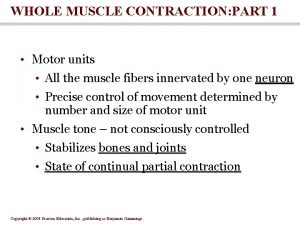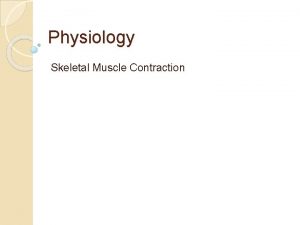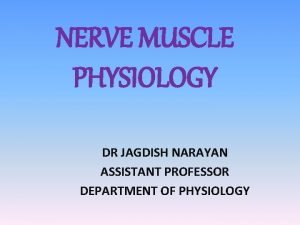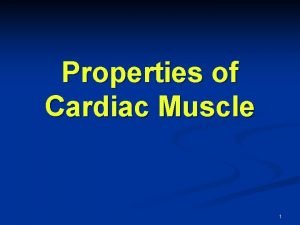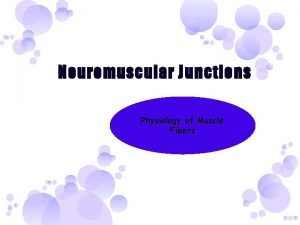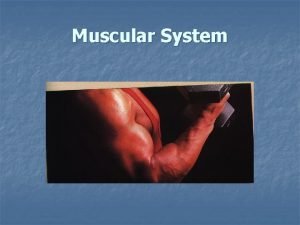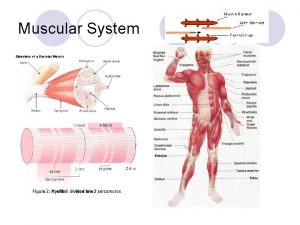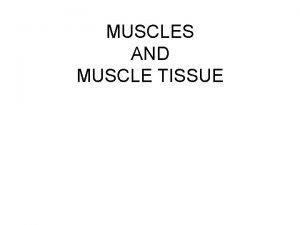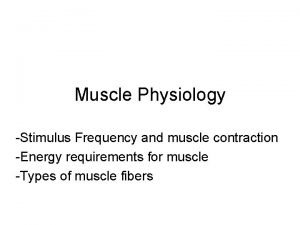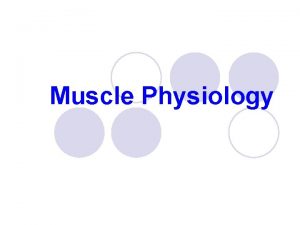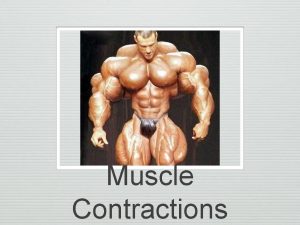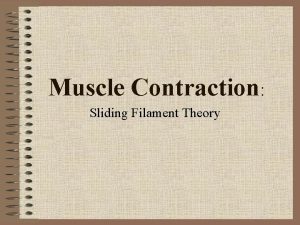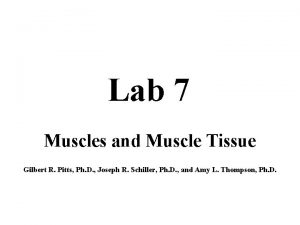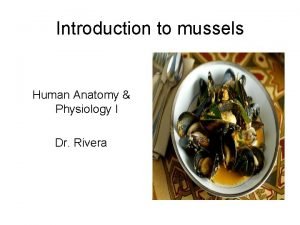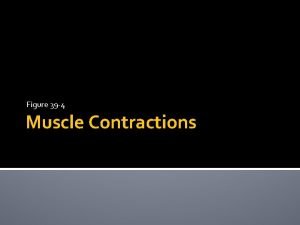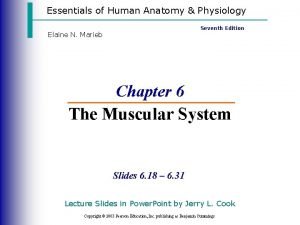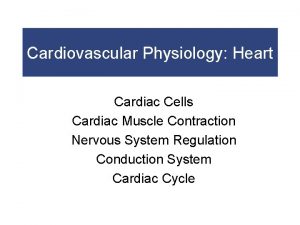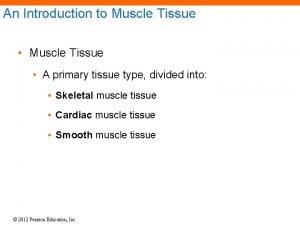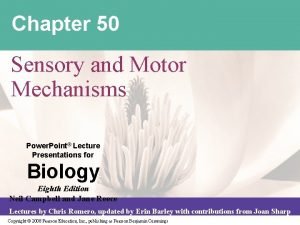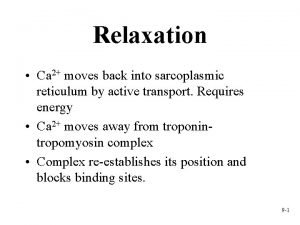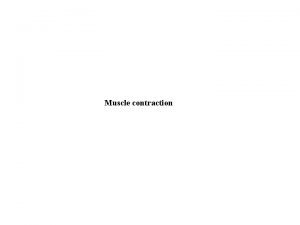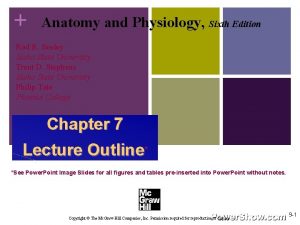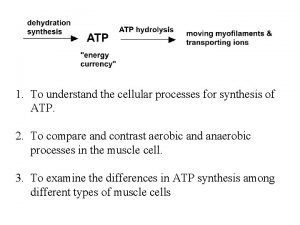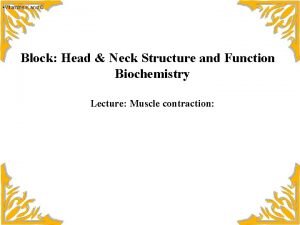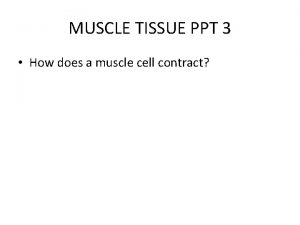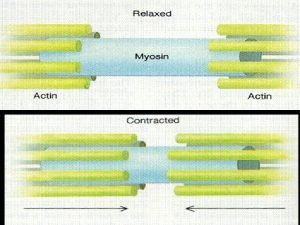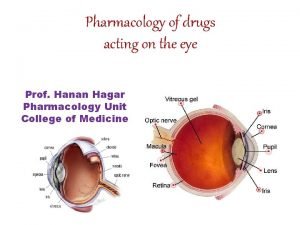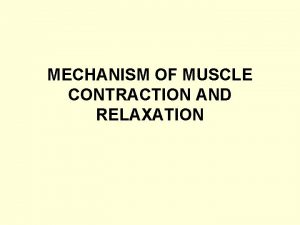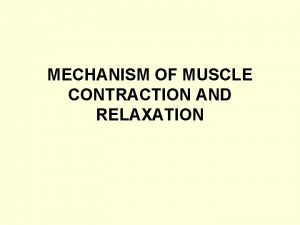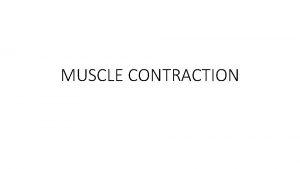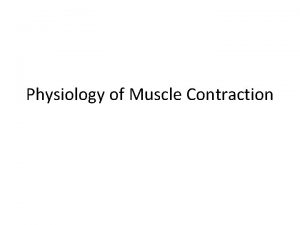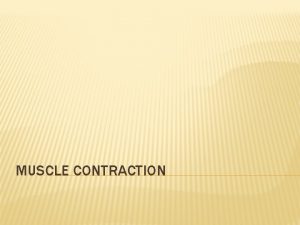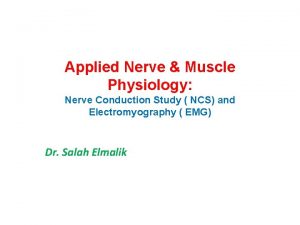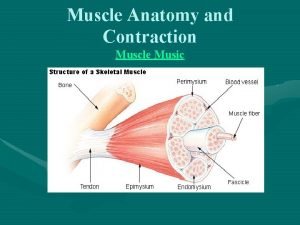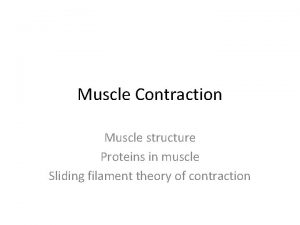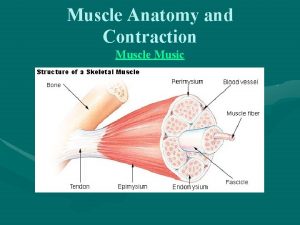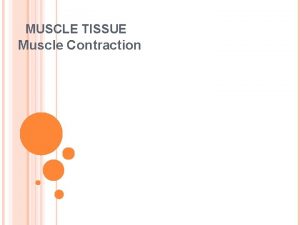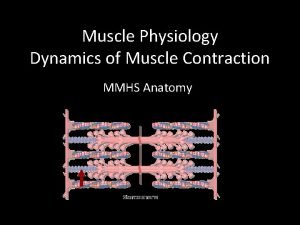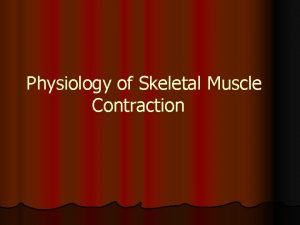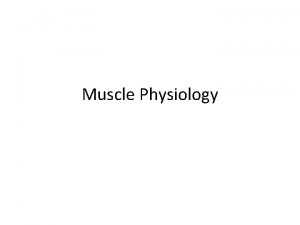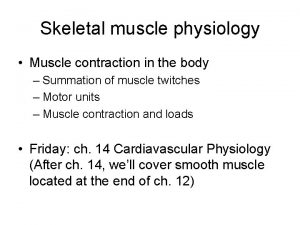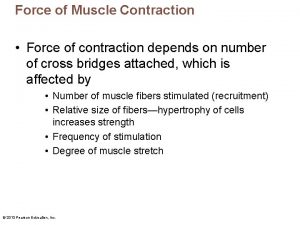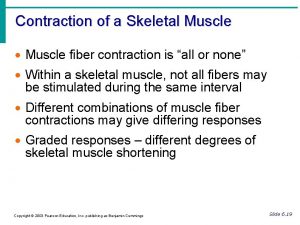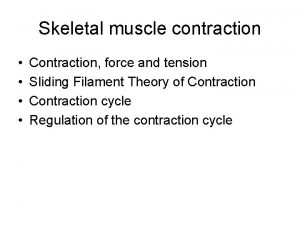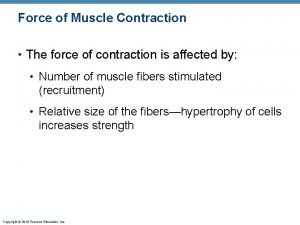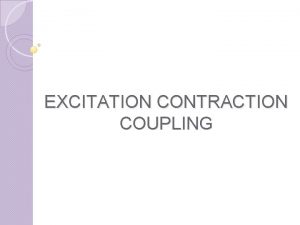Nerve MUSCLE PHYSIOLOGY Molecular Mechanism Of Muscle Contraction





























- Slides: 29

Nerve MUSCLE PHYSIOLOGY

Molecular Mechanism Of Muscle Contraction • Sliding filament mechanism • Walk along theory • Ratchet theory

Walk Along Theory

Interaction B/W Actin & Myosin

Walk Along (Ratchet) Theory

Relaxed & Contracted

NEUROMUSCULAR JUNCTION

Motor Unit Single Motor Neuron & all Muscle Fibers it innervates constitute a single Motor Unit. α- motor N

Neuro. Muscular Junction

Release of Acetylcholine

Ligand Gated Channel (Acetylcholine) Closed Open

• Safety factor for transmission at the Neuromuscular junction. • Fatigue of Neuromuscular Junction

Myasthenia Gravis • 1 in every 20, 000 persons. • Antibodies against acetylcholine receptors. • Autoimmune disease. • Muscle paralysis ---- inability of neuromuscular • junction to transmit enough signals. Neostigmine ---- anticholinesterase drug.

Sarcoplasmic Reticulum T-Tubule & Longitudinal Tubule



T Sarcoplasmic Reticulum T-Tubule & Longitudinal Tubule T L





Sarcoplasmic Reticulum(T-tubule) DHP & Ryanidin Receptor (Hypothetical Model)

A. P entering the Sarcoplasmic Reticulum causing release of Ca++ ions


Excitation-Contraction coupling “The process by which the depolarization of the muscle fiber initiates contraction”

Sequence of Events in contraction of Muscle u Stimulation of Motor Neuron. u Release of neurotransmitter (Acetylcholine) at Motor End-plate. u Binding of Ach to Nicotinic Receptors. u Increased Na+ conductance through Ach Channels u Generation of end-plate potential u Generation of Action Potential in Muscle Fiber

Sequence of Events in Contraction u Inward spread of depolarization along T-Tubule. Sensing by DHP receptors & opening of Rayanidine receptors in terminal cisterns. u Release of Ca++ from terminal cistern of Sarcoplasmic Reticulum and diffusion to myofilaments u Binding of Ca++ to Troponin-C, uncovering Myosin binding on Actin filaments u Formation of Cross linkages between Actin & Myosin leading to sliding of thin on thick filaments, producing movement of Z-lines toward the centre

Steps involved in Relaxation of Muscle u ATP attaches to Myosin head Ca++ Pumped Back in Sarcoplasmic Reticulum. (Ca++ Mg++ ATPase Pump always On ) u Release of Ca++ from Troponin u u Cessation of Interaction between Actin & Myosin filaments

 Muscle
Muscle Myopathy
Myopathy Myofibril
Myofibril Nerve muscle physiology
Nerve muscle physiology Properties of cardiac muscles
Properties of cardiac muscles Sarcoplasmic reticulum
Sarcoplasmic reticulum Muscle system
Muscle system Parallel strap muscle
Parallel strap muscle Treppe
Treppe Muscle spasm
Muscle spasm Incomplete tetanus muscle contraction
Incomplete tetanus muscle contraction Muscle contraction
Muscle contraction Sarcomere sliding filament model
Sarcomere sliding filament model Muscle
Muscle Isometric and isotonic
Isometric and isotonic Muscle contraction animation mcgraw hill
Muscle contraction animation mcgraw hill Direct phosphorylation
Direct phosphorylation Incomplete tetanus muscle contraction
Incomplete tetanus muscle contraction Cardiac muscle contraction
Cardiac muscle contraction Relaxation and contraction of muscles
Relaxation and contraction of muscles Frank starling law
Frank starling law Whole muscle contraction
Whole muscle contraction Phases of muscle contraction
Phases of muscle contraction Frequency summation and tetanization
Frequency summation and tetanization Phases of muscle contraction
Phases of muscle contraction Phases of muscle contraction
Phases of muscle contraction Muscle contraction biochemistry
Muscle contraction biochemistry Tropomyosin muscle contraction
Tropomyosin muscle contraction Muscle contraction
Muscle contraction Drug acting on eye
Drug acting on eye

